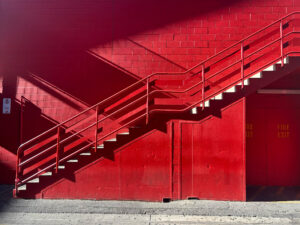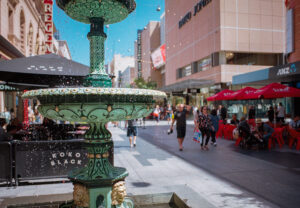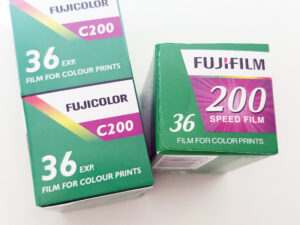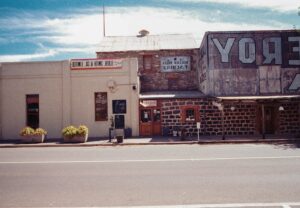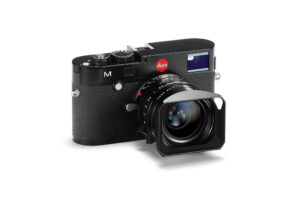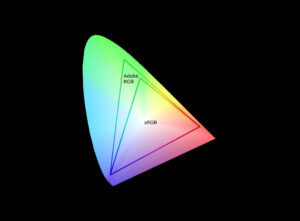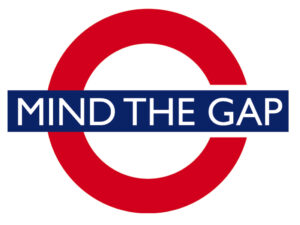So the rumors were right, and it isn’t speculation. There’s a new contender in the world of black-and-white film, and it’s wearing a red dot. Leica MONOPAN 50, the legendary camera maker’s first proprietary 35mm film stock, is not just a nostalgic throwback, it’s a modern marvel. With ultra-fine grain, super-panchromatic sensitivity, and an astonishing resolution of up to 280 line pairs per millimetre, MONOPAN 50 is set to turn heads among photographers who crave detail, dynamic range, and analogue soul. Leica dropping their own 35mm film? That’s huge! It’s proof that film’s still very much alive — just look at the buzz around their 2022 M6 re-release. Between that and the new MONOPAN 50, Leica’s clearly saying, “Analogue isn’t a relic — it’s a living, breathing medium.”
Whether you’re a darkroom purist, a street shooter, or simply someone enchanted by the tactile joy of film photography, Leica MONOPAN 50 is a roll worth pulling.
Honouring a Century of Leica Legacy
It’s no coincidence that this film arrives in 2025 — a full 100 years after the launch of the Leica I, the first mass-produced 35mm camera. That little camera not only revolutionised photography but gave rise to the very term “Leica film.” While the original film rolls were made by the likes of Kodak, Agfa, and Perutz, Leica’s new MONOPAN 50 brings that legacy full circle — finally delivering a film truly of its own.
The Technical Edge: Why MONOPAN 50 Stands Out
Here’s what makes MONOPAN 50 technically extraordinary:
- ISO 50/18°: A deliberate nod to early low-sensitivity films. Perfect for bright conditions and fast Leica glass.
- Ultra-high resolution of 280 lp/mm: One of the sharpest 35mm films ever made, ideal for scanning and enlargements.
- Ultra-fine grain: Smooth tonal transitions with incredible microcontrast.
- Super-panchromatic sensitivity (up to 780nm): Captures near-infrared detail and delivers a broad tonal range, making it compatible with colour filters.
- Traditional silver-rich emulsion: Compatible with nearly all black-and-white developers for full creative control.
- Anti-halation layer: Eliminates blooming and keeps edges crisp.
Whether you’re pushing for large-format darkroom prints or scanning negatives for ultra-detailed digital output, MONOPAN 50 delivers with aplomb.
Performance: For Light, Shadow, and That Leica Bokeh
At ISO 50, this film thrives in well-lit conditions — and that’s by design. Leica knows its lenses: the Noctilux-M, Summilux-M, and Summicron-M all shine when paired with this film. Shooting wide open at f/1.4 or f/0.95 on a bright day? MONOPAN 50 turns harsh sunlight into creamy backgrounds and beautiful tonal gradients. You’ll get that classic Leica bokeh — but in film form.
MONOPAN 50’s extended spectral sensitivity makes it a creative powerhouse when combined with coloured filters. A red or orange filter over a landscape can create stunning contrast and almost infrared-like rendering. The film’s reaction near the IR spectrum also makes it a unique tool for experimentation.

When it comes to performance, I expect MONOPAN 50 to be an absolute beast — but in a refined, Leica kind of way. This film will be all about precision and subtlety, delivering incredible sharpness, super-fine grain, and gorgeous tonal gradation that’s honestly hard to match in the 35mm space. With a native ISO of 50, it will thrive in bright light or with fast lenses wide open, giving you creamy backgrounds and that signature Leica bokeh without blowing your highlights.

The resolution is nuts — 280 line pairs per millimetre — which means every little texture, wrinkle, leaf vein, or building facade gets rendered with insane clarity. Shadows roll off smoothly, highlights hold detail, and mid-tones feel rich and nuanced, not flat. Thanks to its super-panchromatic sensitivity that extends into the near-infrared, it handles skies, foliage, and skin tones with depth and drama, especially when paired with a colour filter. And whether you’re scanning or printing in the darkroom, MONOPAN 50 holds up beautifully — sharp enough for massive enlargements, but with a softness where it matters. This is film for people who want to make every frame count.

Packaging to Collect, Shoot, and Love
Let’s talk about the packaging — because Leica has made it clear this isn’t just film, it’s an experience. Each bundle contains five rolls, each sealed in vintage-style packaging that honours the early days of 35mm photography. But here’s the twist: the designs are randomly selected. There’s no option to choose, and no swaps or refunds based on preferences.




As a collector, I love this. It makes every bundle feel like opening a time capsule. I plan to collect all the packaging variations and store them with my film archive. Of course, I’ll also be buying extra rolls to actually shoot — because let’s face it, this film needs to be experienced through a lens, not just admired on a shelf.

Made in Germany – But Who Really Makes It?
Leica has confirmed that MONOPAN 50 is made in Germany by a well-known film manufacturer, though they’ve kept the specific partner under wraps. The quality, however, speaks for itself. This is no rebranded generic stock — MONOPAN 50 feels like a purpose-built tool, designed to coax the best out of Leica lenses and discerning shooters alike. So unlike my previous speculation, it is not Ilford PanF 50.
What Does “Panchromatic” Mean — and Why It Matters
Not all black-and-white films are created equal. The term “panchromatic” refers to a film’s sensitivity to the full visible light spectrum — meaning it captures light from all colours, not just a limited range. In simpler terms, a panchromatic film sees the world much like the human eye does, recording all tones — reds, greens, and blues — as varying shades of grey. This is in contrast to orthochromatic film, which is blind to red light and tends to render reds very dark or black, often creating a more vintage, high-contrast look.

Because Leica MONOPAN 50 is not just panchromatic but super-panchromatic, with sensitivity extending up to 780nm, it even dips into the near-infrared spectrum. That means you can expect exceptional tonal separation, especially in skies, foliage, and skin tones. Blue skies will retain texture, greens won’t turn muddy, and portraits will maintain natural contrast — even when using colour filters. The extended sensitivity also gives photographers more creative control, especially with filters like red, orange, or yellow to enhance contrast in specific elements of a scene.

What does this mean for you? With MONOPAN 50, you get more nuanced, balanced, and lifelike black-and-white images, with smoother gradients and incredible detail — even in tricky lighting. It’s versatile, modern, and refined — exactly what you’d expect from Leica.
Leica Monopan 50 Developing Information
| Developer | Temp | Dilution | Time | Contrast | Sensitivity | Agitation |
| ADOX ATOMAL | 20°C | Stock | 8 min 30 s | 0.65 | — | Standard agitation interval |
| ADOX FX-39 | 20°C | 1+9 | 7 min 15 s | 0.65 | — | Standard agitation interval |
| ADOX HR-DEV | 22°C | 1+49 | 11 min | Normal (N) | 50 ASA / 18° DIN | Agitate continuously for 30 sec, then once every 60 sec |
| ADOX HR-DEV | 22°C | 1+49 | 13 min | Increased (N+0.5) | 80 ASA / 19° DIN | Agitate continuously for 30 sec, then once every 60 sec |
| Ilford DDX | 20°C | 1+4 | 7 min 30 s | 0.65 | — | Standard agitation interval |
| Kodak XTol | 20°C | 1+1 | 9 min 30 s | 0.65 | 50 ASA / 18° DIN | Standard agitation interval |
Seeing these negatives of Leica Monopan 50 come through the developing process reminded me of my visit to Leica.
Ideal Use Cases
Leica MONOPAN 50 excels in:
- Landscape photography: Rich tonal range and infrared response for moody, high-impact imagery.
- Cityscape & architecture: Exceptional sharpness and minimal grain reveal every line and texture.
- Street photography: Fast lenses + slow film = creative control, bokeh, and storytelling.
- Travel & documentary: A film that captures the soul of a place with stunning clarity.
Obviously being 50iso it isn’t a very sensitive film. You will need to shoot wide open on fast glass in good light to shoot handheld. But, on a tripod, clearly its low light capabilities are top notch. Looking at this sample, I like the inky blacks.

It is clear though that Monopan 50 has a very good tonal range.

I Will Buy to Shoot, Buy to Keep
Leica MONOPAN 50 is not just another film stock. It’s a declaration — that analogue photography still has new stories to tell. It’s a technical masterpiece wrapped in a tribute to history. It’s sharp, elegant, rare, and unapologetically Leica.
I’ll be buying several packs: some to freeze, some to shoot, and some just to admire. If you’re even slightly curious, don’t wait — stocks will fly, and this film might just become a future classic.
Leica MONOPAN 50 will be available worldwide starting August 21, 2025, exclusively through Leica Stores and authorised dealers.


